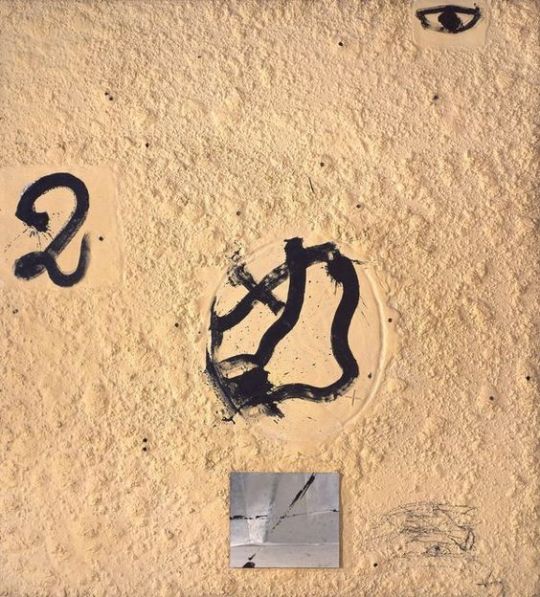#ocula.com
Photo

Albarrán Cabrera The Mouth of Krishna #790, 2019 Pigments on Japanese gampi paper and gold leaf, edition of 20 17 x 25 cm
21 notes
·
View notes
Text

Sally Ross (Australia b 1969)
Landscape (étoile) 2022
oil on wood panel 100 x 80 cm
https://ocula.com/artists/sally-ross-(1)/
201 notes
·
View notes
Photo

Dongwook Lee, Sailor, 2004
Mixed media
https://ocula.com/artists/dongwook-lee/
#hannibal#nbc hannibal#art that reminds me of hannibal#dongwook lee#sculpture#contemporary art#human(ish) bodies#nudity#people are meat#~people are meat~#-~people are meat~-#queue
172 notes
·
View notes
Photo

THE GREAT CHAPBOOK 4 - HOLY by Noh Sangho at Arario Gallery
58 notes
·
View notes
Photo



Paintings by Fiona Rae.
https://ocula.com/artists/fiona-rae/artworks/medium/all/order/recent/1/
168 notes
·
View notes
Photo

Katrien de Blauwer (BE, 1969)
"I’m a photographer without a camera"
Painted Scene 28 (2018)
She applies old and worn materials very sparingly for her exceptional pieces of art!
Using magazine images from the 1920s until the 60s, De Blauwer cuts, reframes, pastes them together with others, or with monochrome strips from those same magazines. A spontaneous process, kindred to the methods of surrealist painters [setting free the subconscious]
[ she makes me appreciate surrounding space too ]
https://www.katriendeblauwer.com/work/scenes
https://ocula.com/artists/katrien-de-blauwer/
https://www.gallery51.com/artist/katrien-de-blauwer/
#Katrien de Blauwer#master#cut#magazine#analogue#collage#technique#conceptual#minimal#articles#overpaint#dream
40 notes
·
View notes
Photo
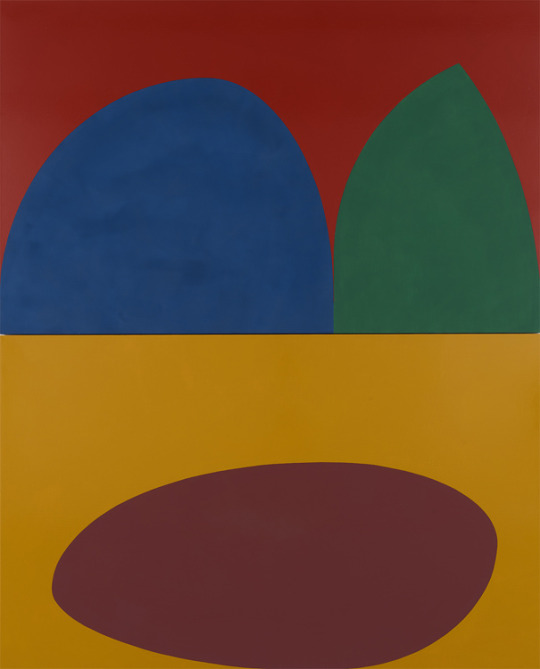

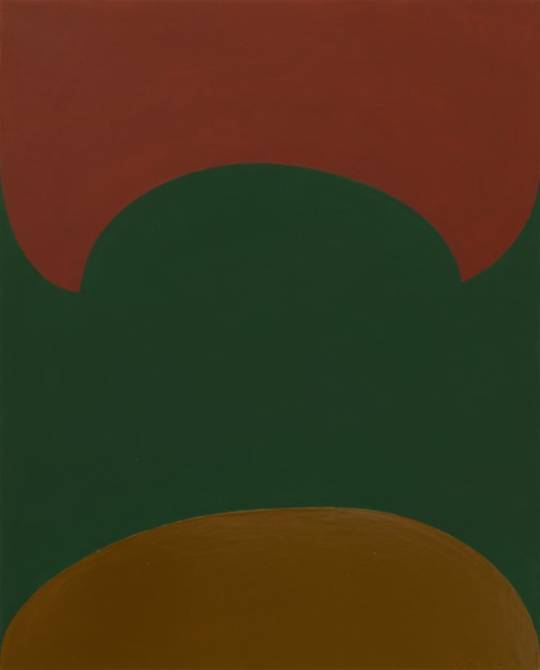
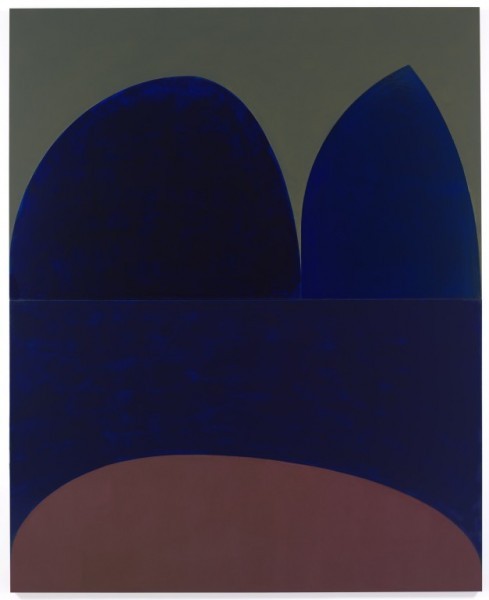
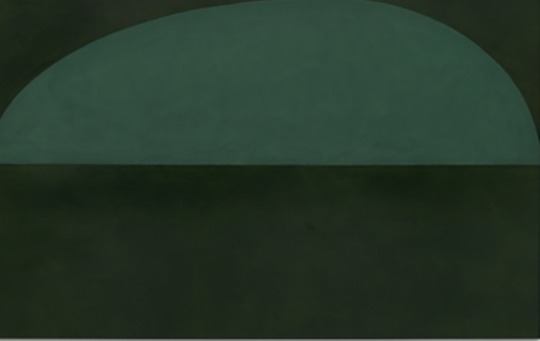

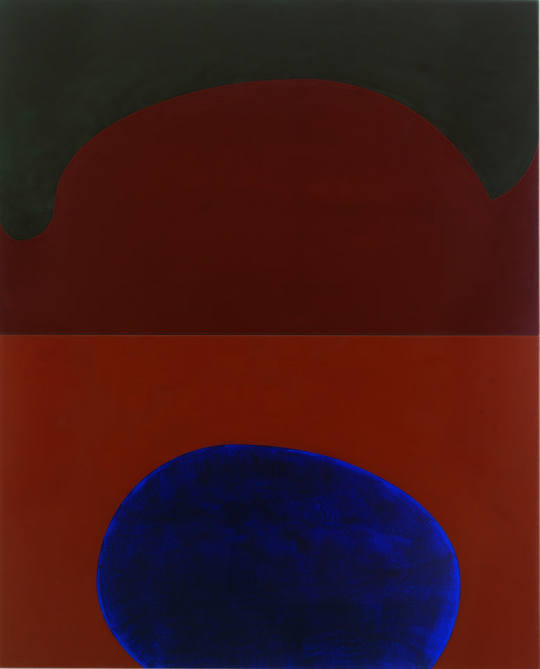

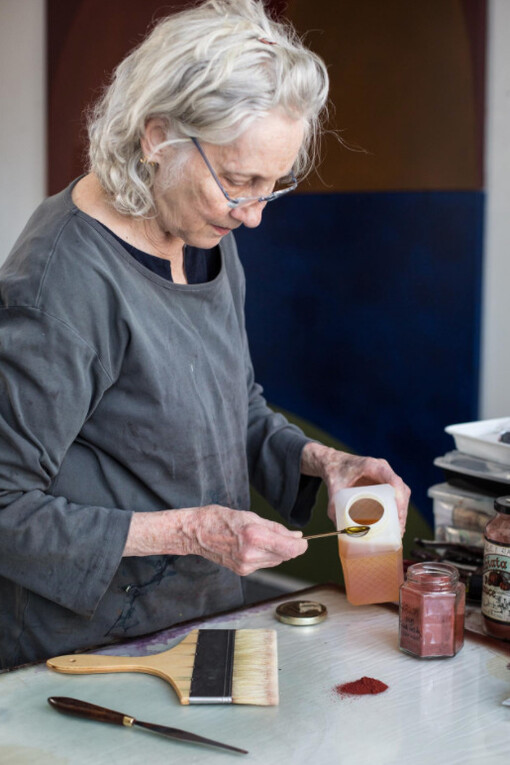
https://ocula.com/artists/suzan-frecon/
"Suzan Frecon’s handling of color and densities of oil paint is particularly distinctive. She favors unnameable deep reds, red oxides, terre vertes, ochers and variations of a very special ultramarine blue, working her magic in surfaces that range from nuanced, luminescent ultra-glossy to uninflected, light-absorbent matte. The works were shown at Zwirner, according to Frecon’s preference, with no artificial lighting during daytime hours, only illumination from skylights, so that the surfaces flickered and changed with passing clouds. Even the passage of gallerygoers in front of the paintings noticeably affected their tonality. Though probably fairly direct, the exact colors are difficult to identify (similar to the green-blue-grays in Brice Marden’s 1971-72 “Grove Group”) because of their physical composition, including the ratio of linseed oil to pigment. (Frecon has secret recipes.) Knife-sharp edges are contrasted with areas of see-through color and dense, even flatness."
By Stephen Mueller
25 notes
·
View notes
Text
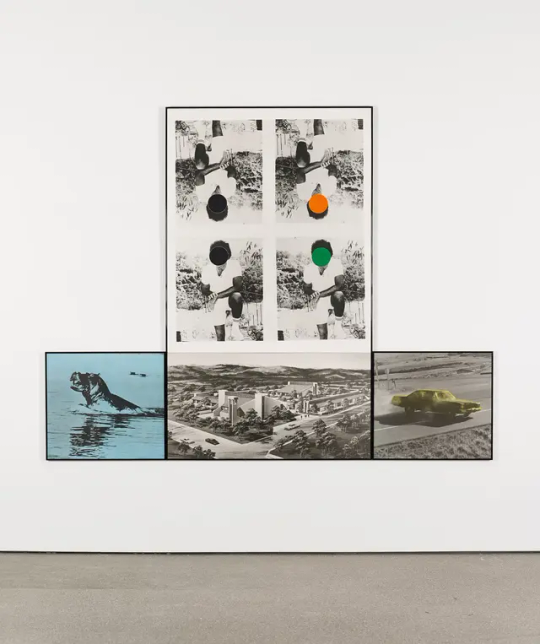
https://ocula.com/art-galleries/galerie-greta-meert/artworks/john-baldessari/rhino-building-man-x-4-car/
9 notes
·
View notes
Photo
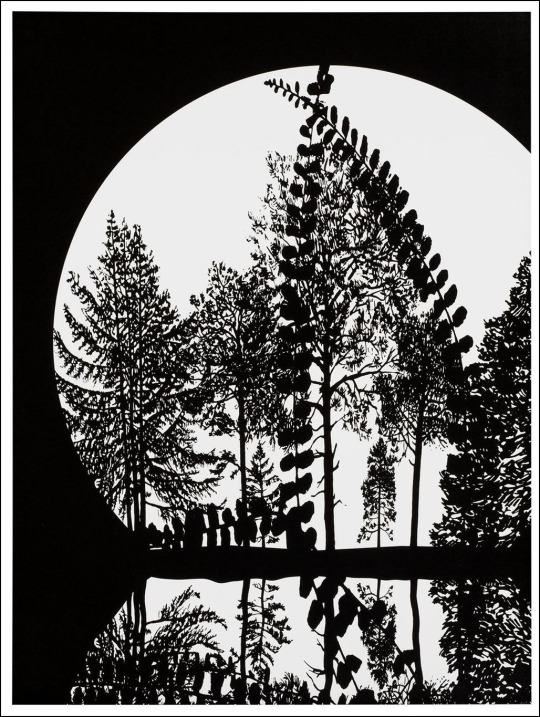
Paul Morisson
https://ocula.com/art-galleries/paragon-gallery/artworks/paul-morrison/calathidium/
43 notes
·
View notes
Photo
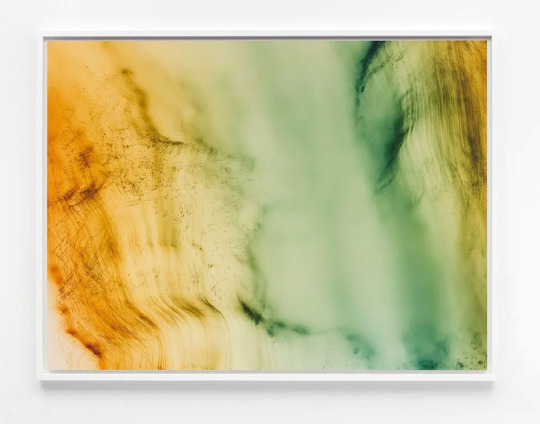
Wolfgang Tillmans
https://ocula.com/art-galleries/maureen-paley/exhibitions/wolfgang-tillmans-%281%29/
20 notes
·
View notes
Photo
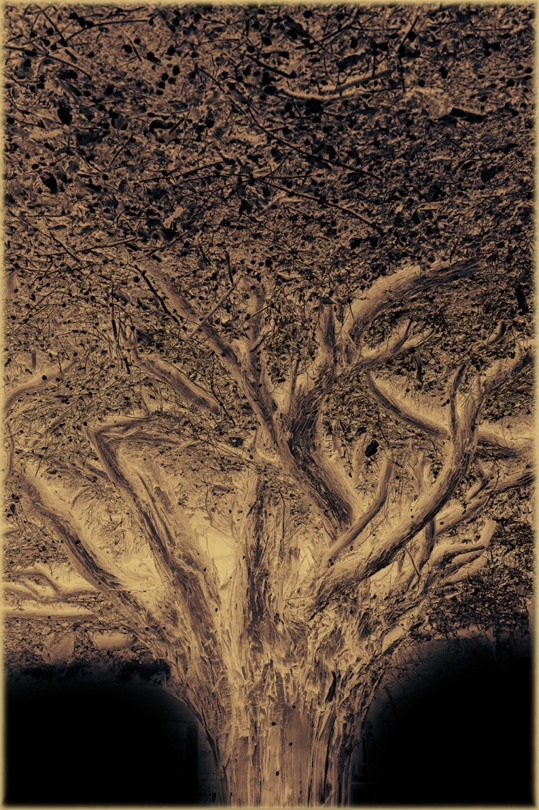
https-//ocula.com/art-galleries/bildhalle/artworks/albarran-cabrera/the-mouth-of-krishna-177/.jpeg
7 notes
·
View notes
Text
Broken Grid VIII
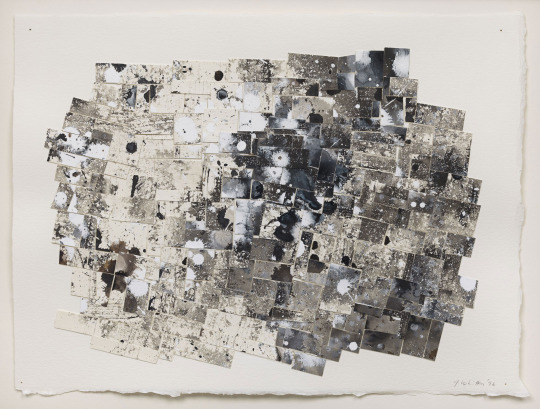
Jack Whitten was born in 1939 in Bessemer, Alabama. In his 20s, he attended a Speech from Martin Luther King Jr. regarding the Montgomery bus boycott. This speech kickstarted Whitten’s “vision for a changed America”[1] and interest in the civil rights movement. In 1960 he began studying art at Southern University and continued to participate in civil rights demonstrations. His concern for himself turning violent out of frustration in those demonstrations[2] led to him moving to New York to finish his schooling[3], which is where he remained to begin his art career. His heavy inspiration from abstract impressionism was drawn from meeting Bill de Kooning, Franz Kline, Philip Guston, Barney Newman, and Mark Rothko, as well as Jacob Lawrence and Norman Lewis.[4]
Broken Grid VIII was created in 1996. It is an 11 ¼” x 15” collage of sumi ink and acrylic on paper.[5] It and its sister work, Broken Grid VI, were created after Whitten became engrossed with the thought of compiling and visualizing all experience.[6] It is an attempt to ‘digitize’ his own mind at the moment of creating the pieces.[7]
The piece itself reads as an organized chaos. It utilizes clean cut tiles of paper overlapping in various orientations and tilts to create depth and to fracture and relocate the splatters of paint and ink that is on them. Broken Grid VIII is a very contemplative piece, where one can get lost in the journey of exploring all the texture and movement created by both the splatters and the limited color palette. With only warm and cool blacks and whites paired with the color of the paper, Whitten uses the visual weight of the contrast in those colors to create an asymmetric, monochromatic composition. I chose this piece due to having to do a double take when I scrolled past it in my search. It is so striking with the large cold white splotches cut up and layered with the rich darkness of the sumi ink. On top of that I think the collage aspect of it gave it enough of a ‘grid’ that the title suggests that you get lost in exploring the cervices and seeing how the differing tiles fit together. The use of the paper as a color is also very playful in the upper left of the piece and allows for the exploration of the different values of white creating visual interest. It also has a fascinating centralized movement that keeps your eye engaged and wanting to continue looping back to see if anything was missed at first look.
[1] Smee, Sebastian. “Jack Whitten: Once Neglected Artist Lately the Toast of the Art ...” The Washington Post, The Washington Post, 22 Jan. 2018, www.washingtonpost.com/entertainment/museums/jack-whitten-a-neglected-artist-who-embraced-african-and-expressionist-art/2018/01/22/f9df8190-ffa8-11e7-8acf-ad2991367d9d_story.html.
[2] “An Interview with Artist Jack Whitten.” Crystal Bridges Museum of American Art, 23 Jan. 2018, crystalbridges.org/blog/an-interview-with-artist-jack-whitten/.
[3] Sung, Victoria. “Stories of the Soul: A Farewell to Jack Whitten.” Walkerart.Org, Walker Art Center, 29 Jan. 2018, walkerart.org/magazine/jack-whitten-in-his-own-words.
[4] Ibid
[5] Whitten, Jack. “Broken Grid VIII, 1996 by Jack Whitten.” Ocula the Best in Contemporary Art Icon., Ocula Limited, ocula.com/art-galleries/hauser-wirth/artworks/jack-whitten/broken-grid-viii/. Accessed 4 Mar. 2024.
[6] Shiff, Richard. “I AM THE OBJECT Featuring Jack Whitten’s Work of the 1990s.” Contemporary Art Library, Hauser & Wirth, www.contemporaryartlibrary.org/. Accessed 4 Mar. 2024.
[7] Ibid
Bibliography:
“An Interview with Artist Jack Whitten.” Crystal Bridges Museum of American Art, 23 Jan. 2018, crystalbridges.org/blog/an-interview-with-artist-jack-whitten/.
Shiff, Richard. “I AM THE OBJECT Featuring Jack Whitten’s Work of the 1990s.” Contemporary Art Library, Hauser & Wirth, www.contemporaryartlibrary.org/. Accessed 4 Mar. 2024.
Smee, Sebastian. “Jack Whitten: Once Neglected Artist Lately the Toast of the Art ...” The Washington Post, The Washington Post, 22 Jan. 2018, www.washingtonpost.com/entertainment/museums/jack-whitten-a-neglected-artist-who-embraced-african-and-expressionist-art/2018/01/22/f9df8190-ffa8-11e7-8acf-ad2991367d9d_story.html.
Sung, Victoria. “Stories of the Soul: A Farewell to Jack Whitten.” Walkerart.Org, Walker Art Center, 29 Jan. 2018, walkerart.org/magazine/jack-whitten-in-his-own-words.
Whitten, Jack. “Broken Grid VIII, 1996 by Jack Whitten.” Ocula the Best in Contemporary Art Icon., Ocula Limited, ocula.com/art-galleries/hauser-wirth/artworks/jack-whitten/broken-grid-viii/. Accessed 4 Mar. 2024.
0 notes
Text
Louise Bourgeois
Louise Bourgeois was a French-American artist who made many works exploring domesticity from a feminist perspective. This is evident in Bourgeois’s series of works known as Femme Maison (Woman House), which refers to both a series of paintings and some marble sculptures from the 1990s.
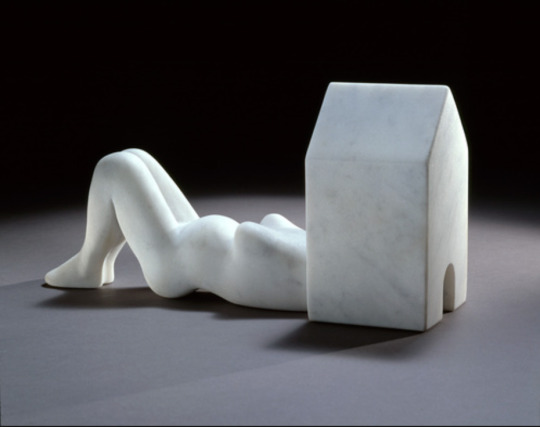
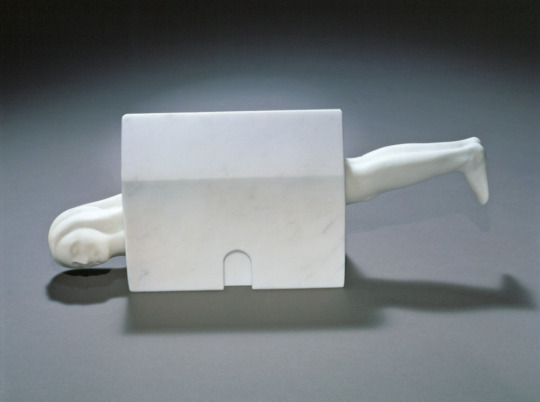
One of the sculptures depicts a female body lying on their back, with their head hidden and engulfed by a simple house-shaped box with a pointed roof. This motif reoccurred throughout the Femme Maison series and addresses female identity in relation to the home, exploring women's traditional roles as homemakers and housewives.
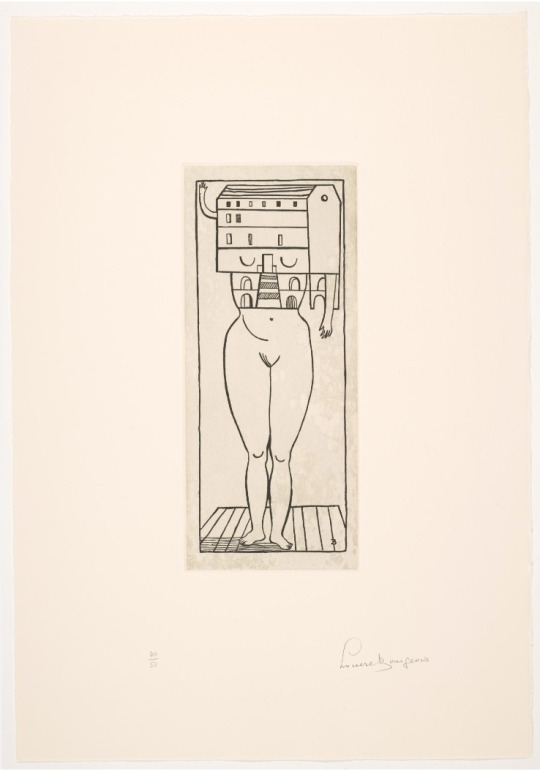

For a long time, women’s identities were tied almost exclusively to domesticity and the home. By replacing the woman’s head with a house in this series of works, Bourgeois is not only stripping them of their individuality but imprisoning them in the home by attaching it to their body, demonstrating the reality of being a woman in a patriarchal society. The tension between the organic shapes and lines of the woman's body against the straight lines of the house perpetuates these ideas, pointing towards women's struggles with domesticity.
The entire collection of Femme Maison works beautifully explores the ideas surrounding femininity and domesticity that I'm interested in. I see conceptual and visual links between these works and Brooke DiDonato's self-portraits in her series A House Is Not A Home, and I still plan on making my own version of the woman-house through image manipulation. As I continue working I'll expand my visual approach, but this is my starting point.
Louise Bourgeois, Femme Maison, 1994, white marble, Hauser and Wirth, Zurich, https://ocula.com/art-galleries/hauser-wirth/artworks/louise-bourgeois/femme-maison/
Louise Bourgeois, Femme Maison, 1994, White marble, Collection of Louise Bourgeois Trust; Art © The Easton Foundation/Licensed by VAGA, New York, NY, Photo by Christopher Burke
Louise Bourgeois, Femme Maison, 1946-47. Oil and ink on linen. Collection Louise Bourgeois Trust, New York. © 2017 The Easton Foundation/Licensed by VAGA, NY. LN2017.745
Louise Bourgeois, Femme Maison, 1984, Photographic Print, https://philamuseum.org/collection/object/341800
1 note
·
View note
Photo



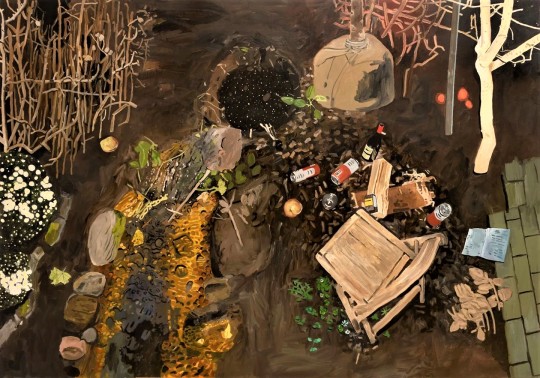


Paintings by Margaux Williamson.
https://ocula.com/artists/margaux-williamson/
70 notes
·
View notes
Text
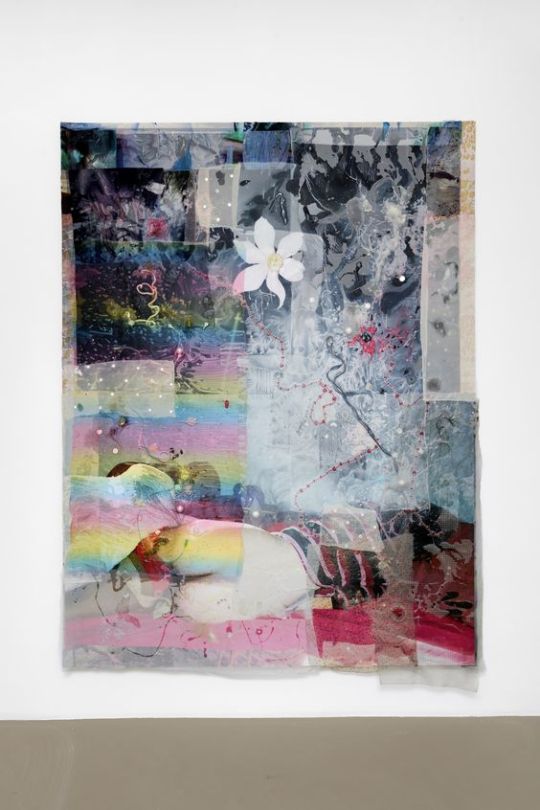
ocula.com
Numbs (Narcisse) by Mimosa Echard
10 notes
·
View notes
